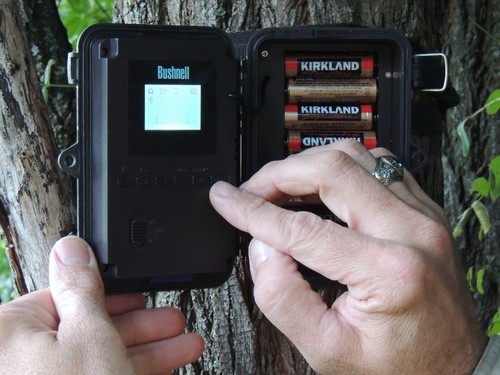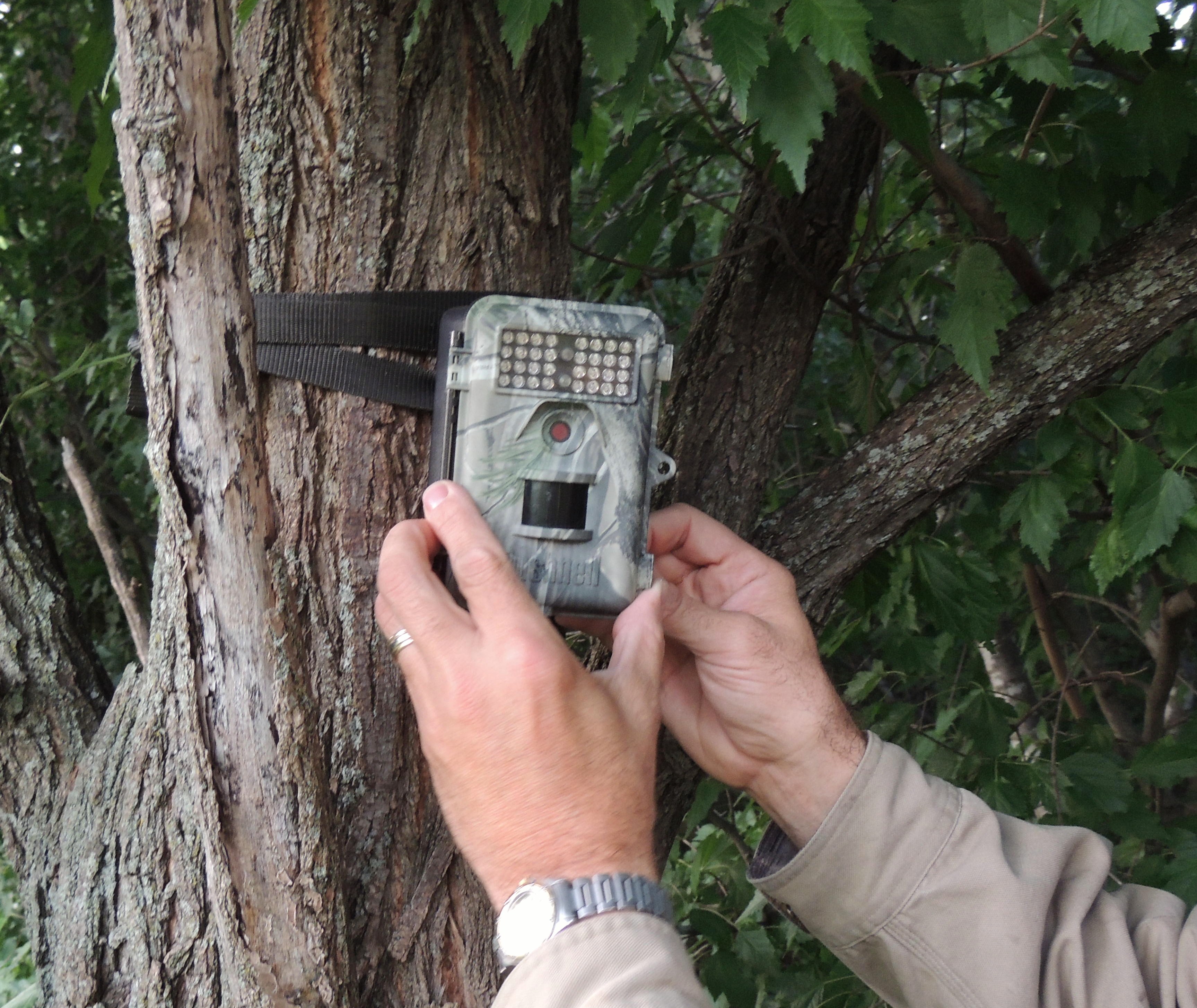Wildlife surveillance cameras, or trail cams as they are commonly called, have evolved into perhaps the most crucial hunting tool on the market today. Hunters, wildlife photographers, and scientists now utilize these gadgets as a way of observing wildlife surreptitiously in its natural setting. Trail cams have become the ‘eyes and ears’ of the modern day hunter.
As a self-proclaimed trail cam aficionado, I have learned many tricks over the years with regards to wildlife surveillance equipment. Having teamed up with Bushnell Canada more than a decade ago, I’ve also had the good fortune of field-testing dozens of trail camera products along the way, and boy how things have changed!
The modern day Bushnell Trophy Cam is a sophisticated scouting tool and after having amassed more than 1 million images, stored on a dedicated hard drive occupying nearly 1 Terabyte of hard disk space, I finally have it down to a science. I use a dozen or more trail cameras, throughout the year, set-up at various locations to mirror the whitetails’ movement.

Photo: Jeff Morrison.
History & evolution of wildlife surveillance cams
Remote game camera technology has been around longer than most realize. Would you believe the first trail camera images were captured more than 100 years ago? Renowned photographer George Shiras is credited as the first to capture wildlife images on a remote camera system back in the 1880s (check them out here). Since then, trail cams have continued to evolve based on supply and demand. During what I call the ‘first wave’ of the trail cam boom during the late 1980’s, old-style 35 mm cameras were equipped with ‘hard wire’ trip lines, as a way of capturing wildlife images remotely. It was crude but it worked.
Digital technology paved the way for the modern cameras we see today. Gone are the bulky systems requiring large “D” batteries or even solar panels to maintain a charge. The modern cam’s are small, lighting fast and use passive infrared to capture images & video. Battery life has been extended to a year or more, and HD picture quality images and video capability is commonplace; combined with Infrared night vision allowing for quality image capturing 24/7.
Setup strategies & Locations
How can we put this modern surveillance technology to practical use for hunting deer?
When looking for good camera locations on new territory, for example, keep an eye out for natural bottlenecks in the forest, or the edge-area where a field meets a stand of trees. Watch for natural travel corridors where deer travel between bedding and feeding areas. Placing a trail camera over bait is also common as it allows curious animals time to be captured on file while enjoying a snack.
The ideal set-up height I’ve found is 4-5’ feet in a tree measuring 10-14” in diameter. The camera straps are typically adjustable to smaller or larger trees. I like to place a small stick crossway at the back of the camera, at the top which forces the lens downwards at a better shooting angle. I also try to conceal the strap with bark whenever possible and make sure no strap length is waving in the wind.
Once your trail cam is set-up, you should always take a few test shots to ensure the proper shooting angle and photo coverage is set correctly. A properly set up trail camera proves to be a much better scouting tool.
Trail cam equipment
Regardless of which model you purchase, a wide assortment of SD memory cards will be required. Those smaller SD cards with less memory (2-4 GB) are perfect for monitoring trails and for use in ‘camera mode’ only. When setting-up over bait, larger 16-32 GB memory cards are suggested. Higher resolution image settings and HD vid segments demand much more memory and will require a larger card. Some higher-end models are advertised as ‘invisible’ with LED infrared shades to mask the ‘glow’ of nighttime images. White-tailed deer, in my experience, are not overly spooked by infrared glow but predators such as coyotes and wolves definitely are!
When using trail cams in bear country or on public lands, I suggest the use of a protective metal box with a chain or cable attachments. Black bears are inherently curious and, trust me, they love nothing more than clawing and biting on the fresh plastic of your camera casing. A locked chain or cable also acts as deterrent on public lands to keep people from stealing your cameras. Going to check your trail camera and finding it gone can be heart-breaking.

Reviewing Images
For anyone who trail cams regularly, playing back the images is the moment of truth and excitement. You will know instantly if your camera location was a good one. When saving an image file on your PC, be sure to include location name and date of viewing. For example: <BuckMtlTrail04112016>. Over time your image library will become a virtual deer scouting archive.
To show how specific deer patterns can be from day to day and year to year. One particular whitetail buck I’ve captured on trail cam for the past 5 years, has exhibited identical travel patterns & behavior. Three years in a row on the same exact day, at the same time, within 30 minutes, this particular deer travelled the exact same trail.
Over the years I have captured images of everything under the sun from mink, fisher, flying squirrels, coyotes, wolves, red fox, raccoons, wild turkeys, ruffed grouse, American woodcock and scads of other neat creatures. These modern gadgets are more than mere scouting tools, they provide hours of fun and entertainment and a glimpse into wildlife behavior seldom seen.
The white-tailed deer rifle hunting season in much of the Northeast begins November 6. For anyone planning to hunt in Ontario this fall, please consult the 2017 Ontario Hunting Regulations.






